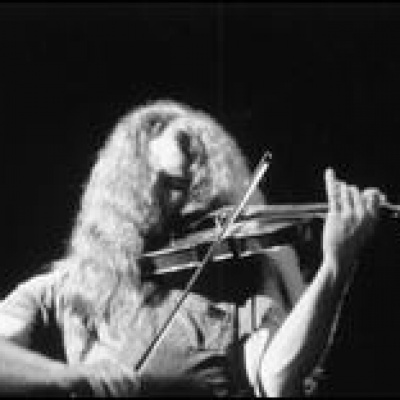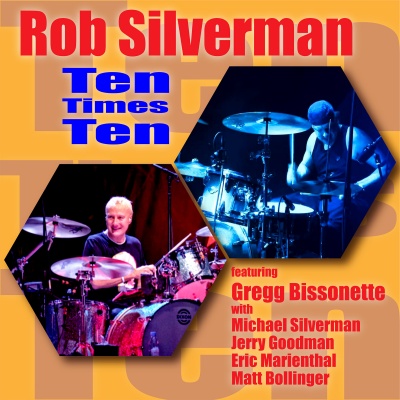
Jerry Goodman
by Bruce EderRock has had very few star violinists, mostly because the violin isn't usually regarded as a rock instrument -- David Cross of King Crimson, Darryl Way of Curved Air, and John Weider of Eric Burdon & the Animals come to mind, and that's about it. Except for Jerry Goodman, the only American in the bunch and arguably the best known of the bunch, thanks to the amount of airplay received by his most successful group recordings. Goodman was born and raised in Chicago and took up the violin as a boy. He was classically trained and had the dexterity for a career in classical but not the dedication to the field -- trained in classical technique and repertory, he found the music unfulfilling, and initially ended up on the periphery of music, working as a roadie for a Chicago-based outfit called the Flock, who had lately changed their name from the Exclusives and were making some noise locally on a local label. Goodman's joining the group brought a vast new range of color to their sound, concurrent with the rock-jazz fusion boom -- a contract with Columbia Records followed, and their self-titled first album followed. An immediate cult favorite, The Flock was the first large-scale showcase for Goodman's playing. The group was soon accepted as a junior member of rock's new elite, playing festivals alongside the likes of Jimi Hendrix, Led Zeppelin, the Grateful Dead, Jefferson Airplane, and Janis Joplin, even making it into the European rock festival documentary Stamping Ground. Goodman's tenure with the group ended in 1970, and he retreated from the music business, withdrawing to rural Wisconsin. He was still there when John McLaughlin came calling in early 1971, in search of a violinist. His first choice was Jean-Luc Ponty, but Ponty wasn't an American and there were potential problems with his immigration status. The Flock led McLaughlin to Goodman, and Goodman, in turn, to participate in recording McLaughlin's solo album My Goal's Beyond. That recording, in turn, led to Goodman's becoming a member of the original Mahavishnu Orchestra, where his playing truly moved into the spotlight, even sharing it with McLaughlin and keyboard player Jan Hammer. Across three LPs, The Inner Mounting Flame, Birds of Fire, and Between Nothingness and Eternity, Goodman achieved an international following with his mixture of folk, rock, classical, and jazz influences, all played in a manner coupling assertiveness and lyricism. The group only lasted until 1973, when it broke up amid much acrimony, leaving sessions for an unissued studio LP behind (The Trident Sessions) which saw release more than two decades later. Goodman and Hammer turned around and, for the Nemperor label, recorded the album Like Children. Goodman wasn't heard on record for another decade. He re-emerged in the mid-'80s on the new age-oriented Private Music label, with On the Future of Aviation and Ariel. The first album was a major surprise, featuring very little violin, while the second LP was more in a string-focused mode. Goodman in more recent years has also worked in film music, in Dirty Rotten Scoundrels (1988), The Truth About Cats and Dogs and Waiting for Guffman (both 1996), and Best in Show (2000). He has also been a member of the reformed Dixie Dregs -- a fusion group heavily influenced by the Mahavishnu Orchestra -- since the 1990s.


![Dream Weaver (2023 Mix) [Instrumental] - Single](http://imge.kugou.com/stdmusic/400/20230816/20230816205602624112.jpg)


